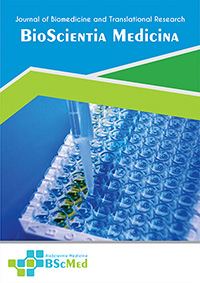Main Article Content
Abstract
Background: Pulmonary alveolar proteinosis (PAP) is a rare lung disease with a variable clinical course. This meta-analysis aimed to synthesize the available evidence on prognostic factors associated with mortality in patients with PAP.
Methods: A systematic literature search was conducted in PubMed, Scopus, and Web of Science databases for studies published from 2013 to 2024. Studies reporting prognostic factors associated with mortality in patients with PAP were included. Data on study characteristics, patient demographics, clinical variables, and outcomes were extracted. Odds ratios (ORs) and 95% confidence intervals (CIs) were calculated for dichotomous outcomes, and hazard ratios (HRs) and 95% CIs were calculated for time-to-event outcomes. Random-effects meta-analysis was used to pool data, and heterogeneity was assessed using the I² statistic.
Results: Six studies with a total of 1,375 PAP patients were included in the meta-analysis. The pooled analysis showed that several factors were significantly associated with increased mortality in PAP. These included older age (HR 1.45, 95% CI 1.02-1.9, p < 0.001), lower diffusing capacity for carbon monoxide (DLCO) % predicted (HR 0.87, 95% CI 0.65-0.98, p < 0.001), higher serum lactate dehydrogenase (LDH) levels (OR 2.50, 95% CI 1.80-3.47, p < 0.001), lower arterial oxygen tension (PaO2) (HR 0.89, 95% CI 0.78-0.98, p=0.002), and a diagnosis of secondary PAP (OR 3.85; 95% CI 2.19-5.56, p <0.001). Heterogeneity was moderate to high for most analyses.
Conclusion: This meta-analysis identified several clinical and laboratory parameters associated with increased mortality in PAP. These factors could be used to identify high-risk patients who may benefit from closer monitoring and more aggressive treatment strategies. Further prospective studies are needed to validate these findings and to develop accurate predictive models for mortality in PAP.
Keywords
Article Details
As our aim is to disseminate original research article, hence the publishing right is a necessary one. The publishing right is needed in order to reach the agreement between the author and publisher. As the journal is fully open access, the authors will sign an exclusive license agreement.
The authors have the right to:
- Share their article in the same ways permitted to third parties under the relevant user license.
- Retain copyright, patent, trademark and other intellectual property rights including research data.
- Proper attribution and credit for the published work.
For the open access article, the publisher is granted to the following right.
- The non-exclusive right to publish the article and grant right to others.
- For the published article, the publisher applied for the Creative Commons Attribution-NonCommercial-ShareAlike 4.0 International License.





